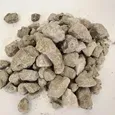Ball Clay
Ball clay is a kaolinitic sedimentary fine-grained clay that imparts plasticity to ceramics

WHAT IS
Ball Clay?
Ball clay is a sedimentary rock known for its plasticity and strength when dried. Covia offers ball clay products for ceramic production, from floor tiles to sanitary ware and tableware, brick production, and plastic forming and extrusion operations.
PHYSICAL AND CHEMICAL PROPERTIES
Ball clay consists mainly of kaolinite with mica and quartz. When moist, it typically exhibits a dark gray color, turning to a lighter shade upon firing. The clay is known for its exceptional strength and flexibility.
WHERE DOES BALL CLAY
Come From?
Ball clay deposits primarily result from sedimentation in ancient rivers and deltas, forming through long geological processes. Covia mines ball clay at our facilities in Troup, Texas, and Huntingburg, Indiana. These deposits, dating back millions of years, exhibit characteristics specific to their formation environments, significantly impacting their suitability for different industrial applications. Covia offers a range of ball clay products tailored to industry needs:
-
PREMIERE® Ceramic pressing clay for pressed and extruded ceramic processes, produced in Huntingburg, Indiana and Troup, Texas and Hephzibah, GA
-
VANTAGE® clay blends for plastic forming and extrusion, produced in Huntingburg, Indiana and Troup, Texas
-
VANTAGE® Specialty grade fire clays for foundry green sand systems, produced in Huntingburg, Indiana
Sustainability
Message
At our Troup, Texas, plant, we identified clays unsuitable for tile manufacturing and determined they were well-suited for brick production. Since 2022, we have partnered with a local brick manufacturer to utilize these materials, optimizing mine development and reducing the need for additional mining activities specifically for brick production.
At our Huntingburg, Indiana site, we have conducted reclamation projects since 2017, transforming former clay mining areas into productive agricultural land. This involved community collaboration, precise land grading, soil replenishment, vegetation planting and invasive species
Would you like to know more about Covia’s silica sand?






